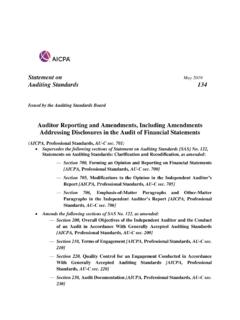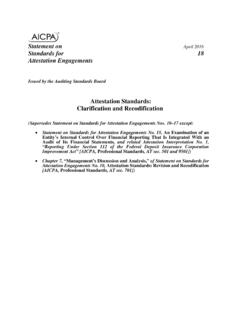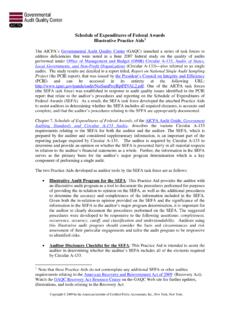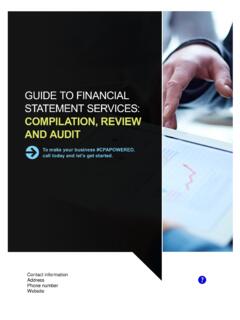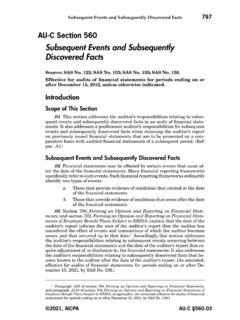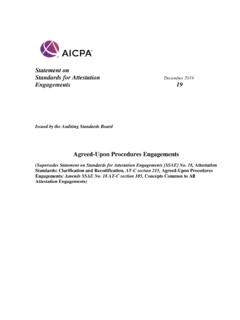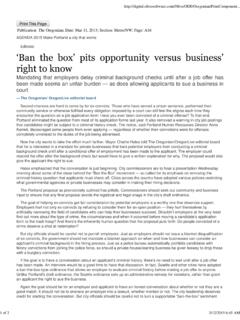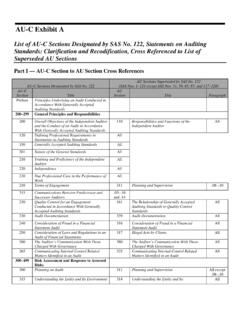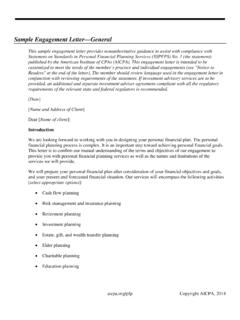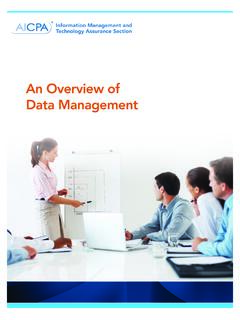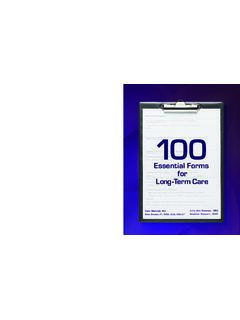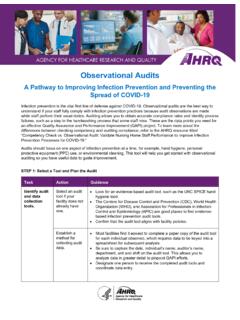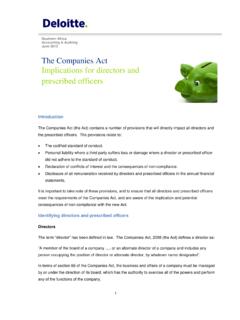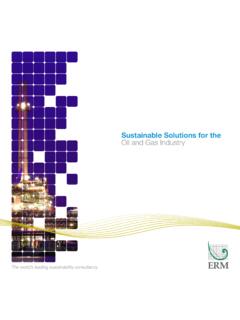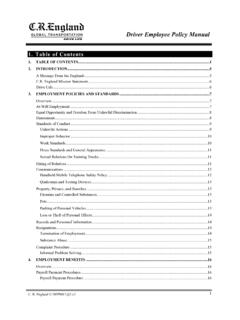Transcription of Generally Accepted Auditing Standards
1 Generally Accepted Auditing Standards1599AU Section 150 Generally Accepted Auditing Standards (Supersedes SAS No. 1, section 150.)Source: SAS No. 95; SAS No. 98; SAS No. 102; SAS No. 105; SAS No. for audits of financial statements for periods beginning on or afterDecember 15, 2001, unless otherwise independent auditor plans, conducts, and reports the results of anaudit in accordance with Generally Accepted Auditing Standards . Auditing stan-dards provide a measure of audit quality and the objectives to be achieved in anaudit. Auditing procedures differ from Auditing Standards .
2 Auditing proceduresare acts that the auditor performs during the course of an audit to comply withauditing general, field work, and reporting Standards (the 10 Standards )approved and adopted by the membership of the AICPA, as amended by theAICPA Auditing Standards Board (ASB), are as follows:General auditor must have adequate technical training and proficiency toperform the auditor must maintain independence in mental attitude in allmatters relating to the auditor must exercise due professional care in the performance ofthe audit and the preparation of the of Field auditor must adequately plan the work and must properly super-vise any auditor must obtain a sufficient understanding of the entity andits environment, including its internal control.
3 To assess the risk of ma-terial misstatement of the financial statements whether due to erroror fraud, and to design the nature, timing, and extent of further auditor must obtain sufficient appropriate1audit evidence by per-forming audit procedures to afford a reasonable basis for an opinionregarding the financial statements under paragraph .06 of section 326, audit Evidence, for the definition of the termappropriate.[Footnote added, effective for audits of financial statements for periods beginning on or after December15, 2006, by Statement on Auditing Standards (SAS) No.]
4 105.]AU on Auditing Standards ---IntroductionStandards of auditor must state in the auditor's report whether the fi-nancial statements are presented in accordance with generallyaccepted accounting auditor must identify in the auditor's report those circum-stances in which such principles have not been consistently ob-served in the current period in relation to the preceding the auditor determines that informative disclosures are notreasonably adequate, the auditor must so state in the auditor' auditor must either express an opinion regarding the finan-cial statements, taken as a whole, or state that an opinion cannotbe expressed, in the auditor's report.
5 When the auditor cannotexpress an overall opinion, the auditor should state the reasonstherefor in the auditor's report. In all cases where an auditor'sname is associated with financial statements, the auditor shouldclearly indicate the character of the auditor's work, if any, andthe degree of responsibility the auditor is taking, in the auditor'sreport.[As amended, effective for audits of financial statements for periods beginningon or after December 15, 2006, by Statement on Auditing Standards (SAS)No. 105. As amended, effective for audits of financial statements for periodsbeginning on or after December 15, 2006, by SAS No.]
6 113.].03 Rule 202,Compliance With Standards , of the AICPA Code of Profes-sional Conduct [ET section ], requires an AICPA member who performsan audit (the auditor) to comply with Standards promulgated by the develops and issues Standards in the form of SASs through a due processthat includes deliberation in meetings open to the public, public exposure ofproposed SASs, and a formal vote. The SASs are codified within the frameworkof the 10 nature of the 10 Standards and the SASs requires the auditor to ex-ercise professional judgment in applying them. Materiality and audit risk alsounderlie the application of the 10 Standards and the SASs, particularly thoserelated to field work and , in rare circumstances, the auditordeparts from a presumptively mandatory requirement, the auditor must doc-ument in the working papers his or her justification for the departure and2 The reporting Standards apply only when the auditor issues a report.
7 [Footnote added, effectivefor audits of financial statements for periods beginning on or after December 15, 2006, by SAS ]3 When an auditor reports on financial statements prepared in accordance with a comprehensivebasis of accounting other than Generally Accepted accounting principles (GAAP), the first standard ofreporting is satisfied by stating in the auditor's report that the basis of presentation is a comprehen-sive basis of accounting other than GAAP and by expressing an opinion (or disclaiming an opinion)on whether the financial statements are presented in conformity with the comprehensive basis ofaccounting used.
8 [Footnote added, effective for audits of financial statements for periods beginning onor after December 15, 2006, by SAS No. 113.]4In certain engagements, the auditor also may be subject to other Auditing requirements, such asGovernment Auditing Standards issued by the comptroller general of the United States, or rules andregulations promulgated by the Securities and Exchange Commission. [Footnote renumbered bythe issuance of SAS No. 105, March 2006. Footnote subsequently renumbered by the issuance of SASNo. 113, November 2006.]5 See section 312, audit Risk and Materiality in Conducting an audit .
9 [Footnote renumbered bythe issuance of SAS No. 105, March 2006. Footnote subsequently renumbered by the issuance of SASNo. 113, November 2006.]AU Accepted Auditing Standards1601how the alternative procedures performed in the circumstances were suffi-cient to achieve the objectives of the presumptively mandatory requirement.[As amended, effective December 2005, by SAS No. 102. As amended, effectivefor audits of financial statements for periods beginning on or after December15, 2006, by SAS No. 113.]Interpretive publicationsconsist of Auditing interpretations of theSASs, appendixes to the SASs,6auditing guidance included in AICPA audit andAccounting Guides, and AICPA Auditing Statements of are not Auditing Standards .
10 Interpretive publications are recom-mendations on the application of the SASs in specific circumstances, includingengagements for entities in specialized industries. An interpretive publicationis issued under the authority of the ASB after all ASB members have beenprovided an opportunity to consider and comment on whether the proposedinterpretive publication is consistent with the SASs. [As amended, effectiveSeptember 2002, by SAS No. 98.].06 The auditor should be aware of and consider interpretive publicationsapplicable to his or her audit . If the auditor does not apply the Auditing guid-ance included in an applicable interpretive publication, the auditor should beprepared to explain how he or she complied with the SAS provisions addressedby such Auditing Auditing Auditing publicationsinclude AICPA Auditing publications notreferred to previously; Auditing articles in theJournal of Accountancyand otherprofessional journals; Auditing articles in the AICPACPA Letter; continuingprofessional education programs and other instruction materials, textbooks,guide books, audit programs, and checklists.
